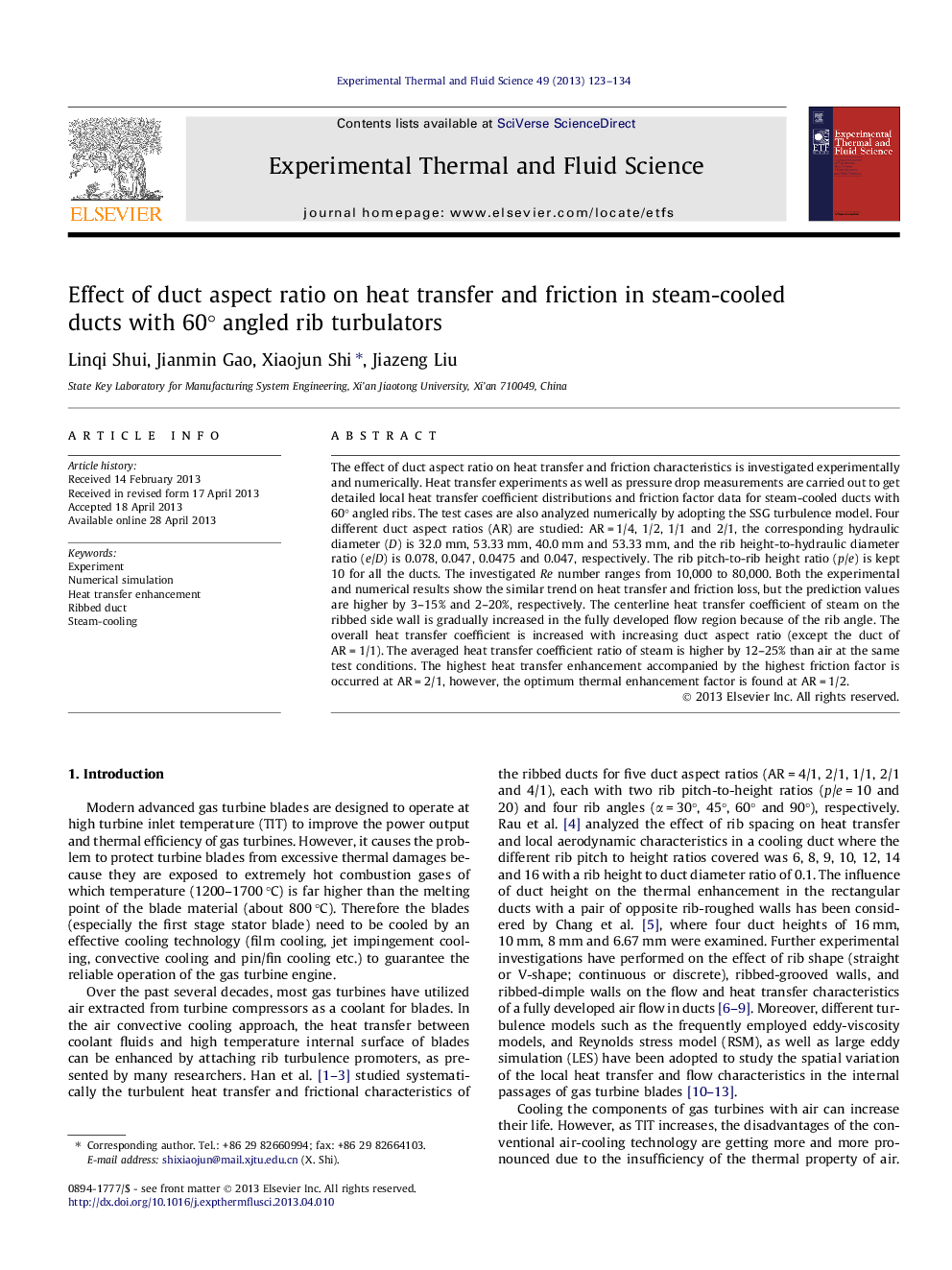| کد مقاله | کد نشریه | سال انتشار | مقاله انگلیسی | نسخه تمام متن |
|---|---|---|---|---|
| 651643 | 1457427 | 2013 | 12 صفحه PDF | دانلود رایگان |

• We model 4 ducts with 60° ribs by welding four stainless steel plates.
• We study the heat transfer and flow features in the 4 steam-cooled ribbed ducts.
• The effect of duct aspect ratio on the forced convection heat transfer is studied.
• The case of AR = 2/1 has the highest Nu/Nus and f/fs and AR = 1/4 has the lowest ones.
• The highest thermal enhancement factor is obtained for AR = 1/2.
The effect of duct aspect ratio on heat transfer and friction characteristics is investigated experimentally and numerically. Heat transfer experiments as well as pressure drop measurements are carried out to get detailed local heat transfer coefficient distributions and friction factor data for steam-cooled ducts with 60° angled ribs. The test cases are also analyzed numerically by adopting the SSG turbulence model. Four different duct aspect ratios (AR) are studied: AR = 1/4, 1/2, 1/1 and 2/1, the corresponding hydraulic diameter (D) is 32.0 mm, 53.33 mm, 40.0 mm and 53.33 mm, and the rib height-to-hydraulic diameter ratio (e/D) is 0.078, 0.047, 0.0475 and 0.047, respectively. The rib pitch-to-rib height ratio (p/e) is kept 10 for all the ducts. The investigated Re number ranges from 10,000 to 80,000. Both the experimental and numerical results show the similar trend on heat transfer and friction loss, but the prediction values are higher by 3–15% and 2–20%, respectively. The centerline heat transfer coefficient of steam on the ribbed side wall is gradually increased in the fully developed flow region because of the rib angle. The overall heat transfer coefficient is increased with increasing duct aspect ratio (except the duct of AR = 1/1). The averaged heat transfer coefficient ratio of steam is higher by 12–25% than air at the same test conditions. The highest heat transfer enhancement accompanied by the highest friction factor is occurred at AR = 2/1, however, the optimum thermal enhancement factor is found at AR = 1/2.
Journal: Experimental Thermal and Fluid Science - Volume 49, September 2013, Pages 123–134